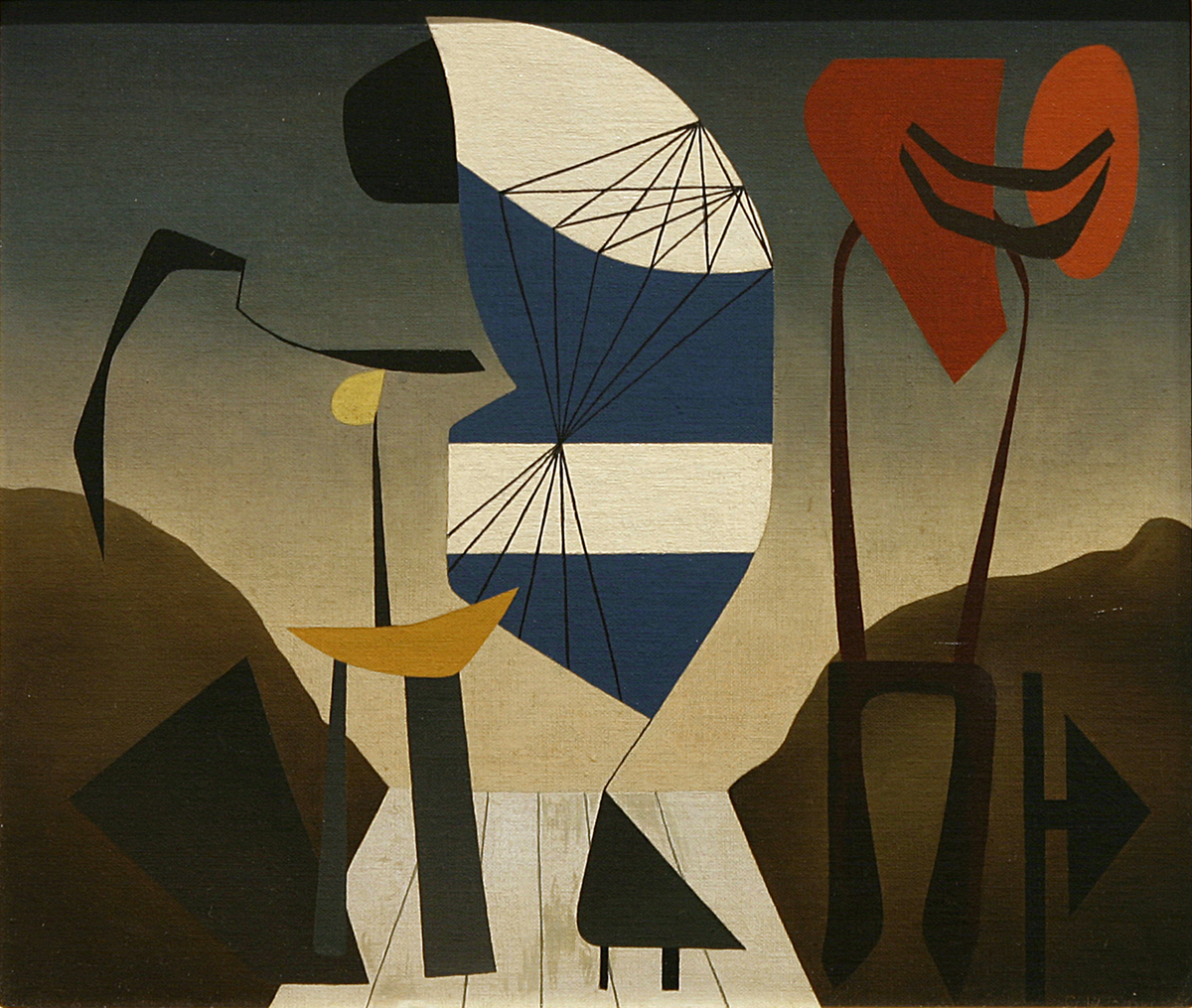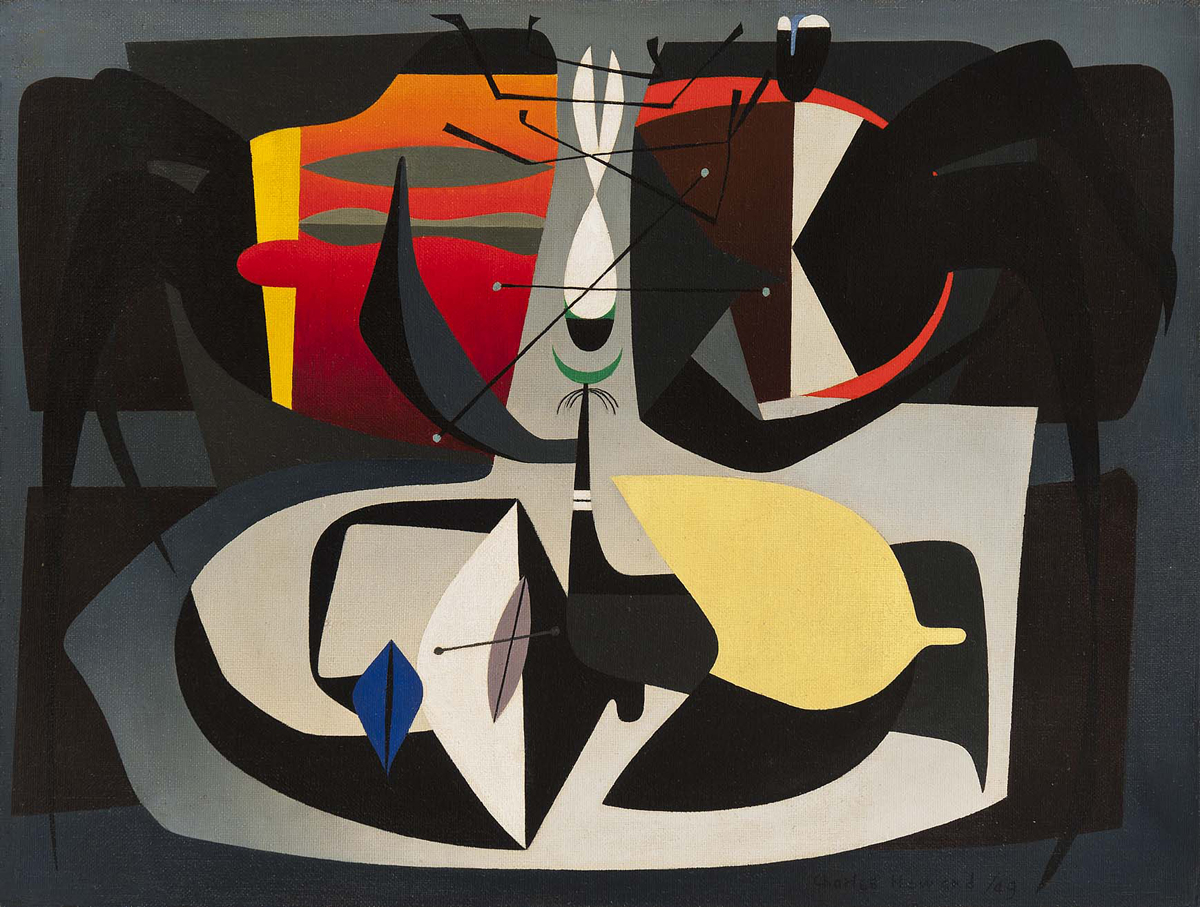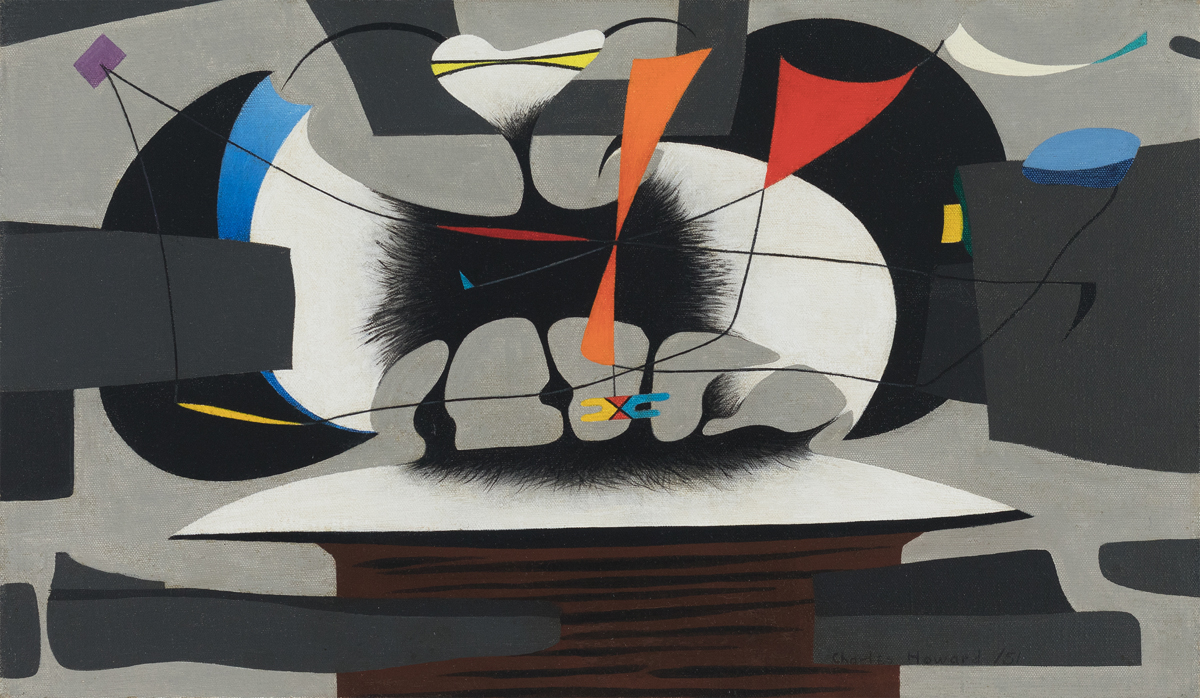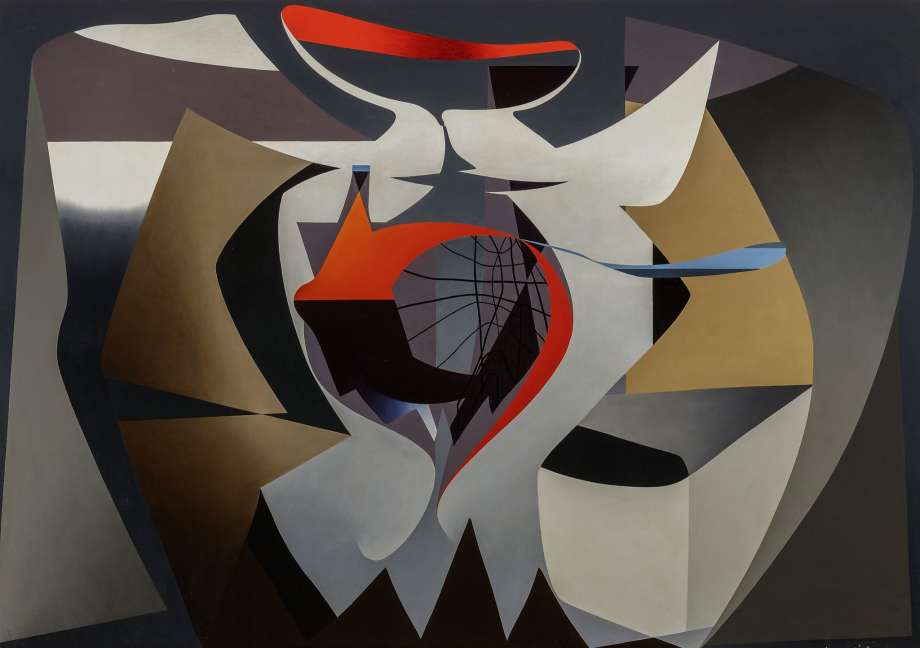BAMPFA’s Charles Howard: A Margin of Chaos brings a long-lost artist home.
Charles Howard graduated from Berkeley High School and attended UC Berekeley in the 1910s. His father, John Galen Howard, the principal architect of the University of California campus, founded the Berkeley architecture program. His mother, Mary Robertson Bradbury Howard, an accomplished watercolorist, hobnobbed with the Carmel-by-the-Sea plein air painters. His brothers Henry (an architect), Robert (a sculptor), and John (a painter), no doubt contributed to Charles Howard’s initial choice to train, first at Cal and then at Harvard, for a distinctive vocation all of his own: journalism.
But in his mid-20s, after an eye-opening tour of Europe, Howard succumbed to the pull of the visual arts. He devoted himself to painting and quickly made a name for himself in New York, where he exhibited his work at the Whitney Studio Club. Although he identified with no particular school, in the 1930s he showed mainly alongside surrealists such as Max Ernst and Yves Tanguy in the movement’s historic New York and London exhibitions.

Stylistically speaking, his paintings from this period — The Dove, for example — fall somewhere between geometric abstraction and biomorphism. In the 1940s, Peggy Guggenheim recognized him as an up-and-coming talent and invited him to exhibit at her Art of This Century gallery, among a diverse roster of artists that included Salvador Dalí, Marcel Duchamp and Wassily Kandinsky. Back in the Bay Area, the California Palace of the Legion of Honor organized a retrospective of Howard’s work in 1946.
Since then, however, no American museum has followed suit, until this summer — when BAMPFA’s curator of modern and contemporary art, Apsara DiQuinzio, orchestrated the artist’s return to Berkeley. The exhibition features 75 abstract paintings, works on paper and graphics representing the full sweep of Howard’s career.

Even though Howard doesn’t figure in most histories of 20th-century art, his commitment to formal experimentation makes him both a modernist anomaly whose work resists stylistic categorization and an exemplar whose stylistic restlessness spurred innovation. Borrowing visual idioms from the arts of the past as well as from his contemporaries, Howard recast sources — from Giorgione to Miró — in ways that still look strange and new today.

Howard’s career resisted circumscription within geographical as well as formal boundaries. As a young man, he left (then) provincial San Francisco for the East Coast. After a decade, he moved on to London. There, throughout the 1930s, he consorted with refugee artists from all over Europe, marrying the English painter Madge Knight.
The Howards retreated to the States in 1940 and spent the war years in San Francisco. Examples of Howard’s graphic work as a propagandist are also on display at BAMPFA. A poster produced for the Oakland Defense Council in the 1940s, for example, urges Oaklanders to seek training from their Defense Warden to protect themselves in the event of a gas attack. The graphic, executed in the surrealist manner of René Magritte, shows noxious grey clouds drifting across the blacked out window of a stately Victorian. The image captures the menacing tone of wartime propaganda circulating in California, a state deemed particularly vulnerable due its vast Pacific exposure. This kind of ephemera, too rarely displayed in art exhibitions, helps place the artist in an historical tableau much larger than the art world.

After the war, the Howards returned to England, where they stayed for the next 25 years. The decision doubtless contributed to Charles Howard’s historical eclipse. During the 1950s, while European cities labored to reconstruct, New York — which embodied triumphal American modernity with its skyscrapers, technologies, and consumerism — achieved unrivaled cultural influence. In the meantime, Howard and his wife tucked themselves away in a charming thatched cottage in Helions Bumpstead, Essex.
After a time, arts arbiters back in the States forgot about Howard. American critics, curators and art historians, embroidering on nationalist narratives of cultural ascent, did not look to London — let alone Helions Bumpstead — for inspiration. The paintings Howard produced in England during the last decades of his career, however, are today quite unforgettable.

Such masterpieces as The Aimant, acquired by BAMPFA in 2016, Binary Armature and Night Painting bring together everything the artist learned in his geographically and formally restless career. The post-war paintings, with their formal complexity and technical virtuosity, captivate the eye as their compositions unfurl into a state of perilous equilibrium. They seem to stop explosive action at the precise moment before everything flies irretrievably apart. The darkness of wartime experience, the capacity for horror humans harbor, negotiates a fragile standoff with lightness of heart.

‘Charles Howard: A Margin of Chao’ is on view at the Berkeley Art Museum and Pacific Film Archive through Oct. 1, 2017. For more information, click here.